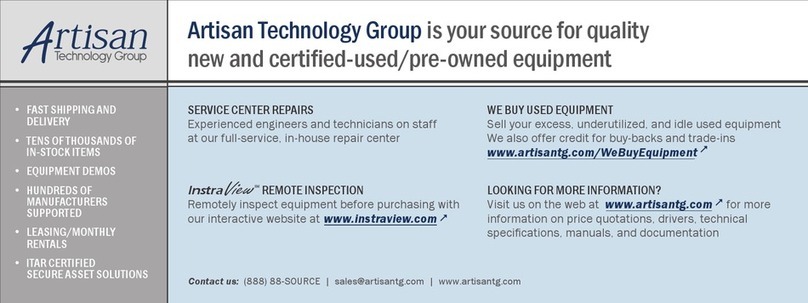
Vytran LLC: PTR-200-XLR Operator’s Manual Version 3.0 iii
Table of Contents
1
Introduction.............................................................................................................................................1
1.1
Parts Checklist ................................................................................................................................1
1.2
Setting UP the PTR-200-XLR..........................................................................................................2
2
Controlling the PTR-200.........................................................................................................................3
2.1
Unit Control Buttons........................................................................................................................3
2.2
Handset Controller ..........................................................................................................................4
2.2.1
Power Up .................................................................................................................................4
2.2.2
User Parameter Files...............................................................................................................4
2.2.3
Recoat Parameters..................................................................................................................5
2.2.4
Options Menu...........................................................................................................................6
3
Priming the PTR-200..............................................................................................................................7
3.1
Cleaning Recoat Mold.....................................................................................................................7
3.2
Priming the Injection System...........................................................................................................7
3.2.1
Manual Injection System..........................................................................................................8
3.2.2
Remote Manual Injection System ............................................................................................8
3.2.3
Automatic Injection System....................................................................................................10
4
Recoat Process....................................................................................................................................12
4.1
Loading the Fiber ..........................................................................................................................12
4.2
Recoating......................................................................................................................................13
4.2.1
Manual Injection System........................................................................................................13
4.2.2
Manual Remote Injection System ..........................................................................................14
4.2.3
Automatic Injection System....................................................................................................14
4.2.4
Curing the Coating.................................................................................................................15
4.3
Recoat Diagnostics .......................................................................................................................16
5
Maintenance.........................................................................................................................................17
5.1
Planned Maintenance....................................................................................................................17
5.2
Cleaning........................................................................................................................................17
5.2.1
Clean Mold.............................................................................................................................17
5.2.2
Check/Clean FHB Inserts ......................................................................................................18
5.3
Recoat System Maintenance ........................................................................................................18
5.3.1
Check Recoat Lamps.............................................................................................................18
5.3.2
Empty the Manual Injection System.......................................................................................18
5.3.3
Flush the Manual Remote Injection System ..........................................................................18
5.3.4
Purge the Automatic Injection System...................................................................................19
5.3.5
Flush Automatic Injection System..........................................................................................20
5.3.6
Replace Recoat Material........................................................................................................20
5.3.7
Replace and Align Mold Assembly.........................................................................................21
5.3.8
Replace Tungsten Halogen Lamps........................................................................................21
5.3.9
Replace Vacuum V-Groove Inserts .......................................................................................22
Appendix A: Material Data Safety Sheet......................................................................................................23




























